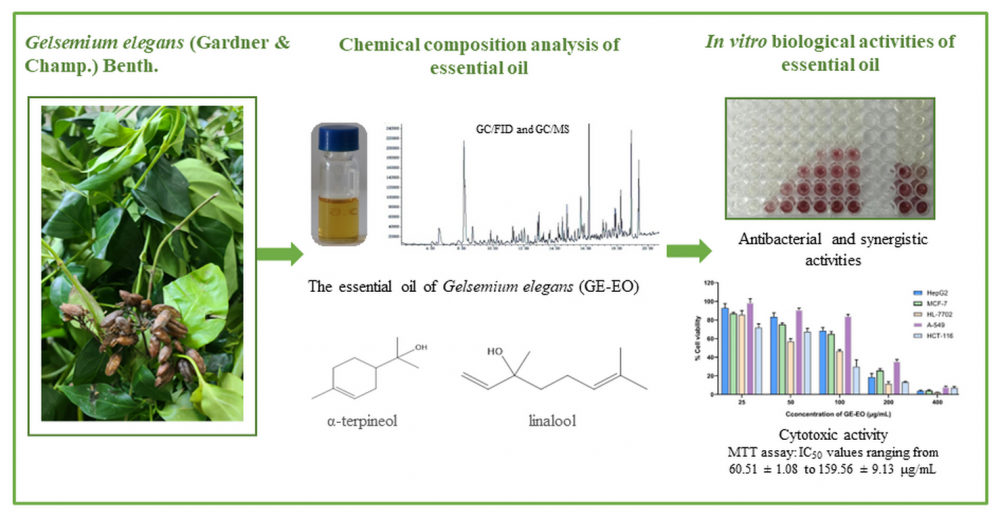JOURNAL 2872
Records of Natural Products
Year: 2023 Issue: 6 November-December
p.1074 - 1079
Viewed 2233 times.
GRAPHICAL ABSTRACT

ABSTRACT
This study aimed to analyze the chemical composition of the essential oil (GE-EO) isolated from Gelsemium elegans (Gardner & Champ.) Benth. aerial parts by GC/FID and GC/MS, and to evaluate its antibacterial, cytotoxic, and synergistic antibacterial properties. A total of 40 compounds were characterized, representing 95.1% of the total oil. The major constituents were identified as α-terpineol (18.8%), n-pentadecanal (11.5%), methyl hexadecanoate (7.2%), n-tetradecanol (5.2%) and linalool (4.1%). In microbroth dilution tests, GE-EO demonstrated antibacterial activities against Staphylococcus aureus, Bacillus subtilis, and Escherichia coli with minimum inhibitory concentrations (MICs) ranging from 0.16 to 0.32 mg/mL. In addition, significant synergistic effects were observed in both combinations of GE-EO with chloramphenicol and streptomycin. Based on the MTT assay, GE-EO was found to have broad-spectrum cytotoxicities against the A-549, MCF-7, HepG2, HCT-116, and HL-7702 cell lines with IC50 values ranging from 60.51 ± 1.08 to 159.56 ± 9.13 μg/mL.
KEYWORDS- Gelsemium elegans
- essential oil
- antibacterial
- synergistic
- cytotoxic